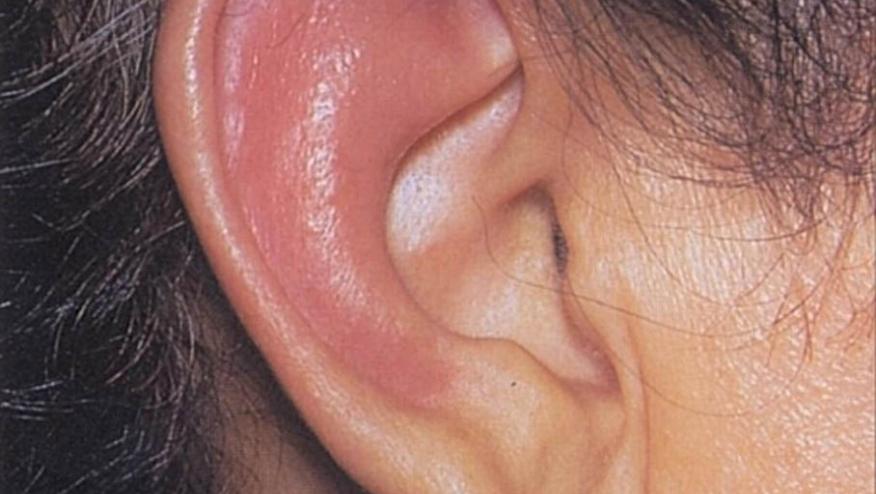Because It's Rare Doesn’t Mean It Doesn’t Exist: A Tribute to Relapsing Polychondritis Save

During medical training, we were taught about rare diseases that are unlikely to be encountered, but there is a reason why our professors even mention these diseases. It is not just for our board exams; the lectures are for us to recognize the features of the disease when the rare patient comes across our exam table.
In the United States, a disease is classified as rare if there are fewer than 200,000 people afflicted. Currently, there are 7000 different types of rare diseases, with 30 million people in the United States and 350 million people worldwide living with a rare disease [1]. It has been suggested that “if all the people with rare diseases lived in 1 country, it would the 3rd most populous country in the world [2].” Yet, there is lack of attention to these diseases.
Relapsing polychondritis (RP) is a rare immune-mediated disease (Orpha #728) that causes episodic cartilage inflammation. The incidence of RP is estimated to be 1-3.5 per million per year, but if you are the 1 in a million, you would expect to have a timely diagnosis and access to effective therapy. While RP was recognized in 1923 by Jaksch-Wartenhorst, only 1563 articles about it have been archived in PubMed in contrast to >130,000 articles for rheumatoid arthritis. No classification criteria exist for this disease that carries high morbidity and increased mortality, and there is no standard of care established for managing these patients. With only anecdotal reports and case series, treatments for RP vary from prednisone monotherapy to haphazard combinations of cyclophosphamide, DMARDS, and biologics. Unclear is if any of these therapies will change the disease course or extend survival. Without validated classification criteria, the ability to enroll and study a homogenous group of patients in a controlled setting is limited. Without good data, there are no evidence based guidelines.
Many patients will seek multiple medical consultations before receiving a diagnosis for their symptoms; the average time it takes to RP diagnosis from onset of symptoms is 1.9 years [3,4]. Socio-economic costs have not been studied for RP but are believed to be high considering the expenses of visits to multiple specialists, diagnostics, time off work, and decreased productivity; in addition, treatment prices are substantial.
According to Orphan.net, the average drug approved under the Orphan Drug Act 1983 (ODA) costs $118,820 per year [1]. Understandably, insurances are reluctant to pay for testing and treatments for rare diseases where there is no data. Because of this, the FDA is providing incentives for pharmaceutical makers to develop orphan drugs:
a 50% tax credit on the cost of clinical trials undertaken in the USA
a seven year period of marketing exclusivity following the marketing approval
some written recommendations provided by the FDA concerning clinical and preclinical studies to be completed in order to register the new drug
a fast-track procedure for the FDA to evaluate registration files
Many times, it takes a celebrity to bring a rare disease to light. Selena Gomez after her renal transplant shared that she has lupus. Bob Saget is a huge advocate for systemic sclerosis after his sister, Gay, succumbed to the disease. Kyle Marcelli and Jeff Westphal, famous race car champions, are “Racing for RP, ” raising funds so that they can support researchers.
Leading the effort to develop classification criteria and paving the way to develop diagnostic and treatment algorithms for RP are 2018 ACR Distinguished Fellow, Dr. Marcela Farrada and her NIH Mentor Dr. Peter Grayson. Visit the NIH website to learn more about this disease and the research that is ongoing: https://www.niams.nih.gov/labs/grayson-lab
To understand the impact of this disease in patients’ lives, I encourage you to watch the following video: https://vimeo.com/124272215 and https://www.youtube.com/watch?v=YMReF4QxpOc.
References:
2. https://globalgenes.org/rare-diseases-facts-statistics/
3. Francesco Borgia et al. Relapsing Polychondritis: An Updated Review. Biomedicines. 2018 Aug 2;6(3). pii: E84. doi: 10.3390/biomedicines6030084.
4. Marcela Ferrada et al. Patient Perception of Disease-Related Symptoms and Complications in Relapsing Polychondritis.Arthritis Care Res (Hoboken). 2018 Aug;70(8):1124-1131. doi: 10.1002/acr.23492









If you are a health practitioner, you may Login/Register to comment.
Due to the nature of these comment forums, only health practitioners are allowed to comment at this time.